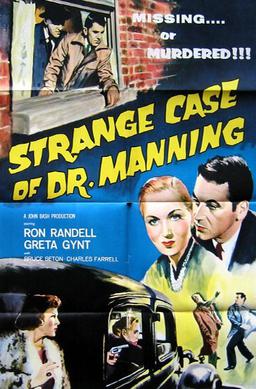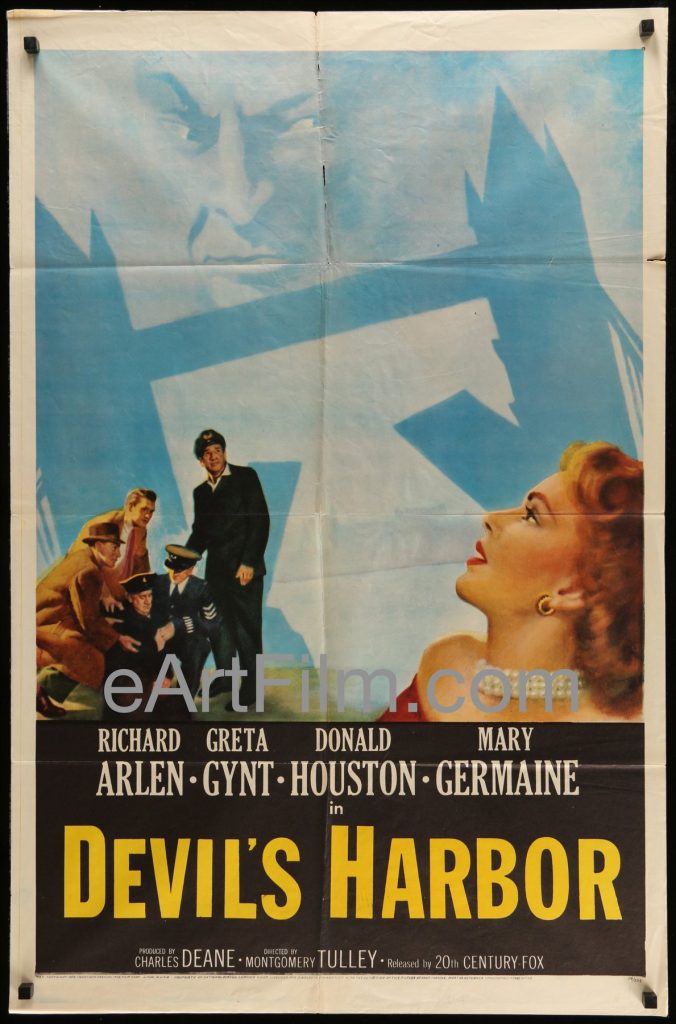
Greta Gynt obituary in “The Guardian” in 2000.
Greta `Gynt was born in 1916 in Oslo, Norway. She made her film debut in Sweden in 1934. Later in the 1930’s she began her career in British films such as in 1939 in “The Dark Eyes of London” with Bela Lugosi. She went to Hollywood to make “Soldiers Three” with Stewart Granger in 1951, her oinly U.S. movie. Her last film was “The Runaway” in 1963. She died in 2000.
Ronald Bergan’s “Guardian” obituary:
It was said that nobody deliberately went to see British B-films in the 1940s and 1950s, because they formed part of a double feature at the local cinema, where audiences had paid to see the latest Hollywood movie.

However, while waiting for the main picture, filmgoers were often distracted by a comely, blue-eyed and blonde actress attempting to bring some sex and glamour into unsexy unglamorous films. Greta Gynt, who has died aged 83, appeared regularly as a femme fatale, British style, in a number of mostly forgotten programme fillers of the postwar years – although she herself is remembered.


In 1951, for instance, she made an off-screen splash on two occasions. The first was at the 8th Army Alamein reunion at the Royal Albert Hall, when she put her arms around Field Marshal Montgomery and gave him a big kiss; the photograph went round the world.
The following month, her picture was widely seen when she turned up to meet the Queen, at the royal command film performance, wearing a silver lamé strapless gown, with silver hair, silver osprey feathers and a silver fox coat. Gynt was born Margrethe Woxholt in Oslo, and first came to Britain at the age of three with her engineer father, who worked for Vickers Armstrong.
Her mother, a costume designer, encouraged her daughter to become an actress (Greta herself sometimes made her own costumes for films). Educated at a convent in Norway, she and her mother returned to England in 1936, where, having changed her name to Gynt after Ibsen’s Peer Gynt, she got a few small stage parts. Then J Arthur Rank put her under contract, with the vain idea of making her into a British Jean Harlow.

One of her first screen appearances was (briefly) in a Hollywood movie, The Road Back (1937), James Whale’s so-so sequel to All Quiet On The Western Front. However, she was first noticed in The Arsenal Stadium Mystery (1939), in which she played the mistress – and chief suspect – of a murdered footballer. In the same year, she was one of evil doctor Bela Lugosi’s victims in The Human Monster, based on an Edgar Wallace story. She would later appear in two more films adapted from Wallace, The Calendar (1948) and The Ringer (1952).
In the wartime propaganda picture Tomorrow We Live (1942), Gynt played a French patriot who risks her life by becoming the mistress of a German commander to get information about U-boats, and in Mr Emmanuel (1945), she portrayed a German cabaret singer. She was often seen singing (with her own voice) in nightclubs, as, for instance, in Easy Money (1948). Gynt was the cause of smoothie Dennis Price’s death in Dear Murderer (1947), when her husband (Eric Portman) killed Price in order to pin the murder on another of her lovers, and in Mr Perrin And Mr Traill (1948), she played a school matron with whom two rival teachers (David Farrar and Marius Goring) were in love.
As a contrast to such melodramas, she was amusing as Penelope Toop, the former actress who had become a vicar’s wife, in See How They Run (1955), based on the popular farce by Philip King. Now nearing 40, she might have found a new vocation in comedy had she pursued this vein of pictures. But it was not to be: “I’m utterly bored with this femme fatale business,” she announced, before retiring to become a housewife.

Gynt was married four times, her last husband being Frederick Moore, a plastic surgeon, who died in 1983. For the last decade of her life, she lived in a beautifully- furnished Mayfair flat as Mrs Moore, although she was once pointed out to me as the former film star Greta Gynt.
A few years ago, I was taken to lunch by an Argentinian film director at the Connaught hotel. When an elegant and handsome elderly woman settled at the next table,
I told my host who she was. He got extremely excited, and went up and kissed her hands, saying that she was still very popular in Argentina, where minor British films, considered exotic, had become something of a cult. She was absolutely delighted, and invited us to join her for lunch. She seemed to glow more brightly than she was allowed in any of her films.

She is survived by a son from her third marriage. Greta Gynt (Margrethe Woxholt), actress, born November 15 1916; died April 2 2000
Greta Gynt’s obituary by Ronald Bergan in “T

